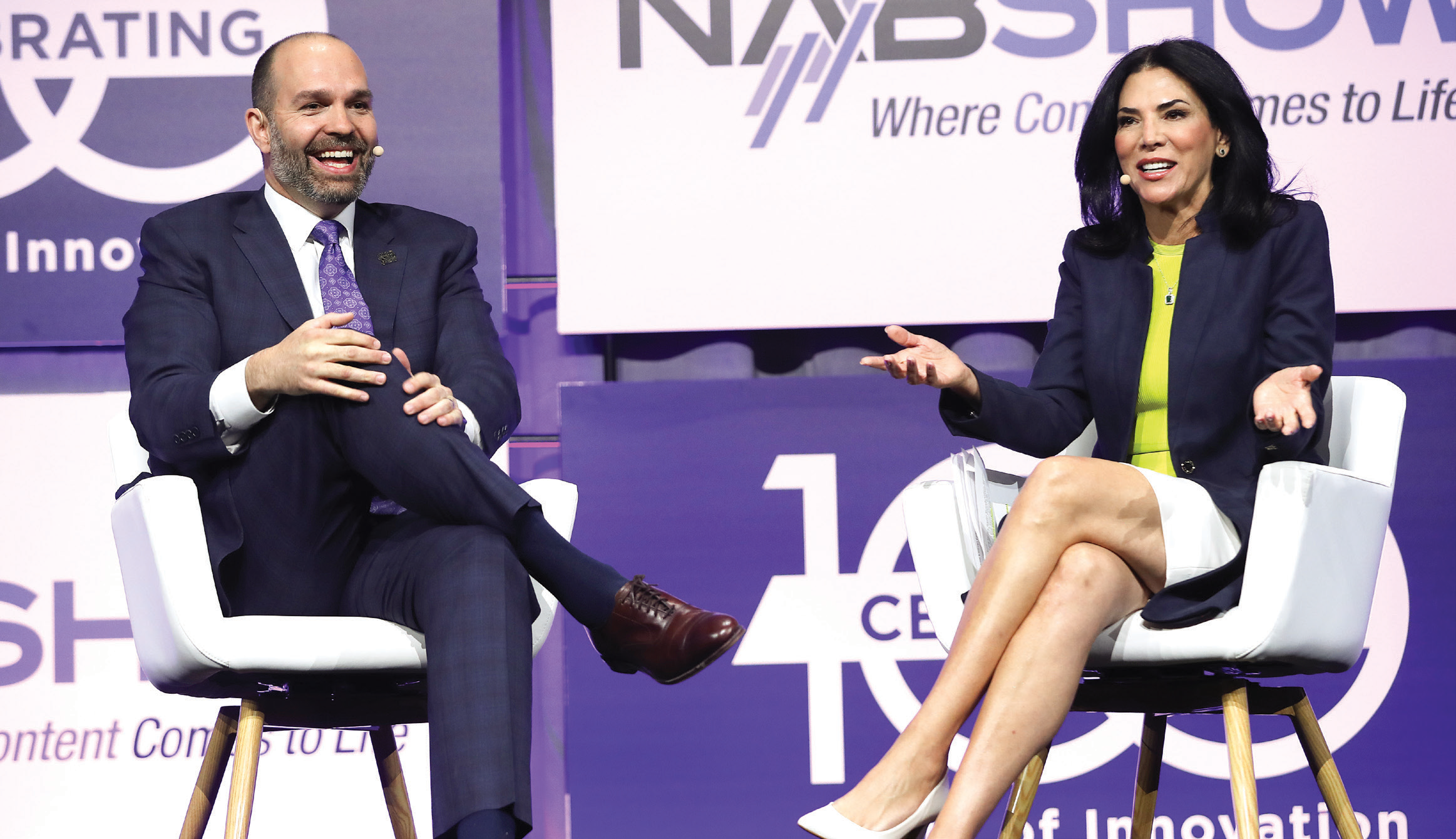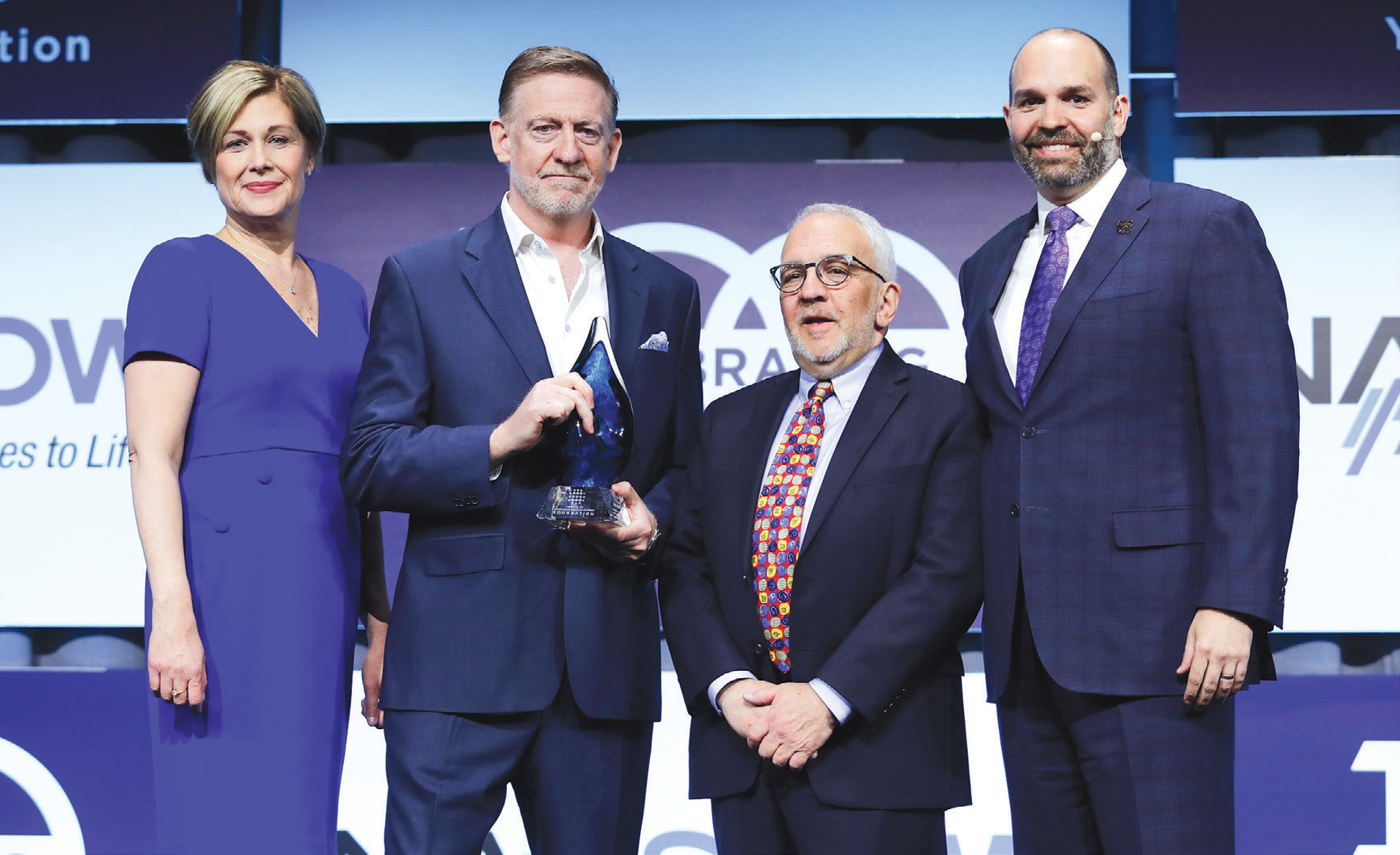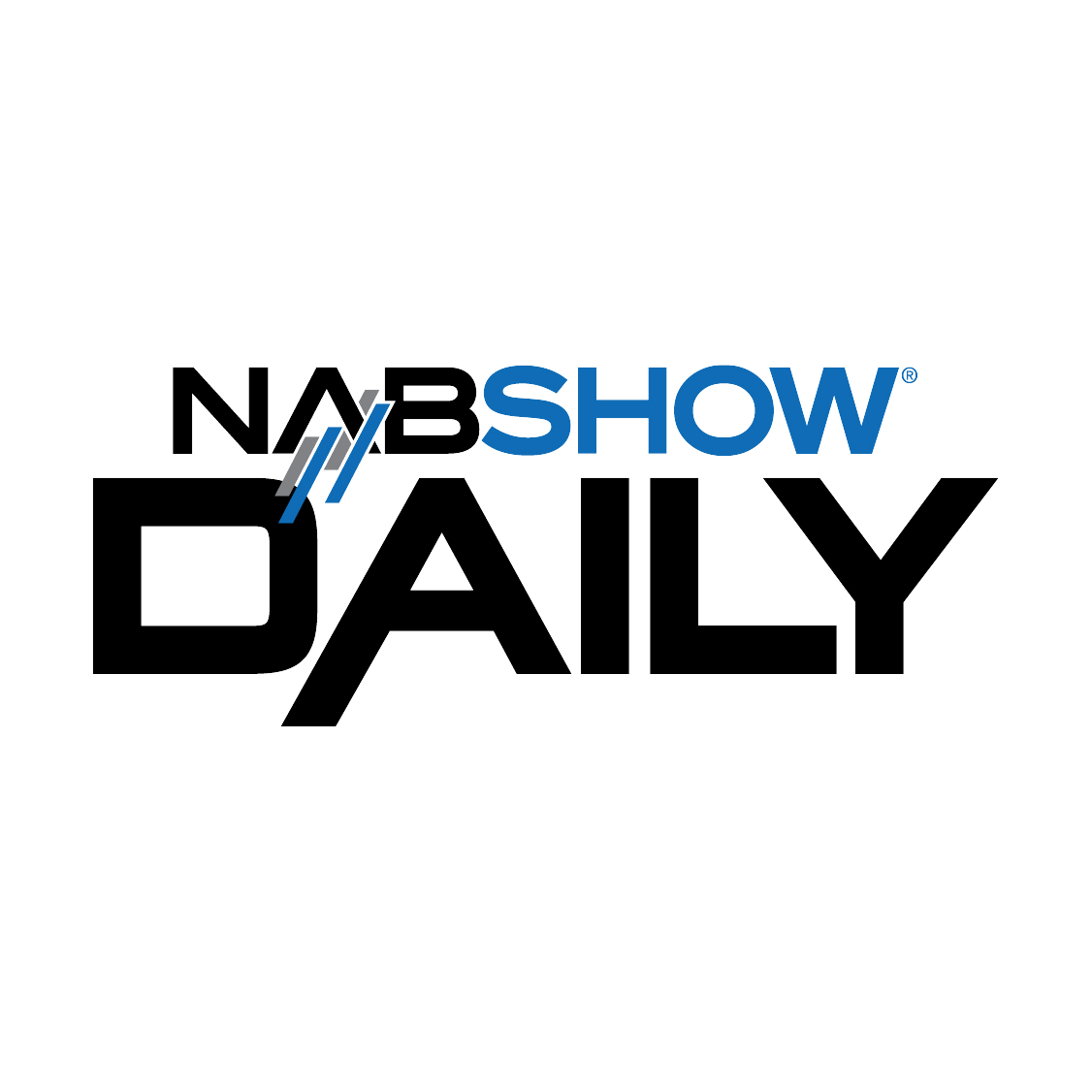
In welcome address, CEO says broadcast TV, radio have a street-level edge in media ‘arms race’
BY Michael malone, broadcasting + cable
Watch the full NAB Show welcome session above.
NAB President and CEO Curtis LeGeyt sat for questions from Gabriela Teissier, anchor at Univision’s KMEX Los Angeles, during NAB Show’s welcome session. LeGeyt said the show’s 100th anniversary allows NAB to reflect on the past and sort out how to best help members in the future.
“The thread throughout all of it is innovation,” he said. “Innovation in service to our local communities.”
LeGeyt spoke of the “arms race” in terms of the modern media age, as the likes of Google, Amazon Prime Video, Spotify and other tech giants fight traditional media for users and revenue dollars. LeGeyt stressed that broadcast is unique in that it covers news at the street level. “We have the boots on the ground in local communities,” he said, “and that’s something no one else is doing.”
The pandemic was a reminder, LeGeyt said, of local broadcasters’ role in the communities it serves. Each subsequent severe weather event or other major local story is another reminder. “It’s very, very clear where broadcasters thrive — free, local, live,” he said.
ATSC 3.0 enhances local broadcast’s role in the community, LeGeyt added, noting how 60 markets now feature the standard also called NextGen TV.
Teissier asked about radio’s efforts to maintain its presence in automobiles. LeGeyt cited the “fierce competition for real estate on the dashboard” involving the newer media players. Making radio’s battle more difficult, he said, is that the industry has a vast array of owners, while the likes of Sirius XM and Spotify have but one.
“If we’re not all rowing in the same direction as an industry,” LeGeyt said, “we’re going to lose this arms race.”
Cable TV, podcasts and other digital media often offer users a forum among those who share their take on the world, LeGeyt said. Local broadcast, for its part, brings people with “different world views, different persuasions, different interests” together with unbiased content. Reporters in a given community know the best way to communicate with consumers in that region.
LeGeyt stressed that AM radio remains “very relevant,” reaching rural communities and serving as backbone of the Emergency Alert System.
Teissier asked about Spanish-language consumers, and LeGeyt mentioned that that demographic is most reliant on local broadcast. “They are far and away the most susceptible to disinformation on social media,” he said.
Local broadcast is “filling an enormous void left by the newspaper industry,” said LeGeyt, and has the support of the lawmakers he encounters in Washington.
Moments before FCC Chairwoman Jessica Rosenworcel took the stage, LeGeyt pressed for “modernized” ownership regulations, which better reflect the state of media in 2023.
Asked about NAB weighing in on the FCC’s handling of the proposed Standard General-Tegna merger, LeGeyt said NAB typically stays out of mergers and acquisitions. But he felt the “uncertainty” in the FCC’s regulatory process may get in the way of further investment in broadcasting. “Do some fundamental changes need to be made to that process?” he wondered.
Teissier also asked about AI, and LeGeyt said such technology can both help and potentially hurt broadcasters. AI can help stations better understand what’s going on in their communities and can free up reporters to be out in the field more. He’s also concerned about content creators being fairly compensated and the potential for mistakes in reporting rooted in AI.
“There are a lot of opportunities but I want to wave the caution flag,” he said.
The future looks bright for broadcast, the NAB chief said, but it will take hard work. “I couldn’t be more excited to lead that fight,” LeGeyt concluded.

Monday’s welcome session (from left): Session co-chair Heidi Raphael of the LABF; “60 Minutes” Executive Producer Bill Owens;
session co-chair Jack N. Goodman and NAB President and CEO Curtis LeGeyt.
His words seemed to resonate with the audience. “I think that he’s got a great grasp of the issues, he communicates his point of view and NAB’s point of view, and he talks about broadcasters in the most favorable light — that we’re here to serve our local communities,” Phil Lombardo, CEO of Citadel Communications, said. “He makes that point time and time again and that’s what you want from the CEO of the National Association of Broadcasters.”


